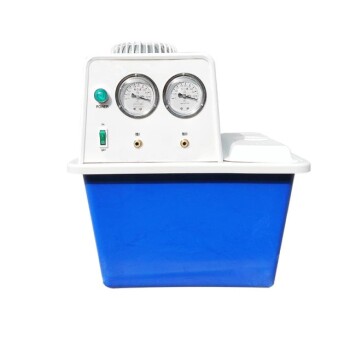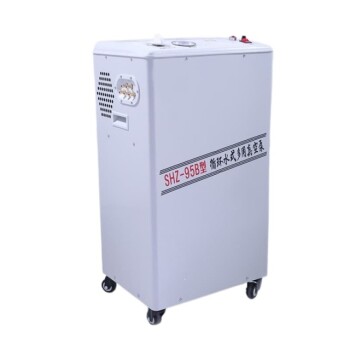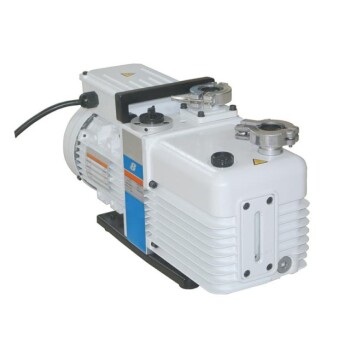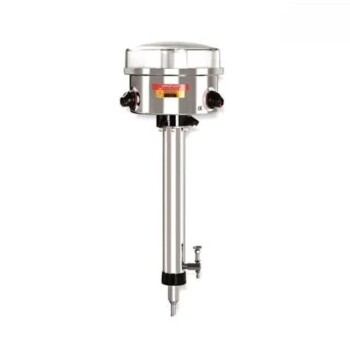Diffusion pumps are critical components in high-vacuum systems, offering durability, reliability, and the ability to achieve extremely low pressure levels. Their operation relies on the interaction of diffusion pump oil and a heater, which creates a vapor jet to capture and expel air molecules. These pumps are versatile, available in various sizes, and suitable for applications like electron-beam microscopy, vacuum deposition, and vacuum furnaces. Key characteristics include their lack of moving parts, high vacuum capabilities, and the importance of selecting the right oil for optimal performance. Below, we explore these characteristics in detail.
Key Points Explained:

-
No Moving Parts: Durability and Reliability
- Diffusion pumps are designed without moving mechanical components, which significantly reduces wear and tear over time. This absence of moving parts minimizes the risk of mechanical failure, making them highly durable and reliable for long-term use.
- The simplicity of their design also translates to lower maintenance requirements, as there are fewer components that can break or require servicing.
-
High Vacuum Capabilities
- Diffusion pumps are capable of achieving extremely low pressure levels, ranging from 10^-2 to 10^-10 torr. This makes them ideal for applications requiring high or ultra-high vacuum conditions, such as electron-beam microscopy, vacuum deposition, and vacuum furnaces.
- The ability to produce such low pressures is due to the pump's unique mechanism, which uses vaporized oil to capture and expel air molecules, creating a differential pressure between the top and bottom of the pump.
-
Operation Mechanism: Oil and Heater
- The core operation of a diffusion pump relies on two key elements: diffusion pump oil and a heater. The heater heats the boilerplate, causing the oil to boil and vaporize. The rising vapor is then compressed through a vertically tapered stack with jet openings, forming an umbrella-like vapor jet.
- This vapor jet captures air molecules, which are then condensed by cooling coils on the pump’s exterior. The condensed oil flows back down, while the air is expelled at the base of the pump. This continuous cycle creates and maintains a high vacuum in the connected chamber.
-
Importance of High-Quality Oil
- The performance of a diffusion pump is heavily dependent on the quality of the oil used. High-quality diffusion pump oil ensures efficient operation, maximizes vacuum levels, and reduces the need for frequent maintenance.
- It is crucial to match the oil to the required vacuum level. Using oil rated for a lower pressure than needed can lead to inefficiencies and increased operational costs without providing any additional benefits.
-
Versatility in Size and Application
- Diffusion pumps are available in a range of sizes, making them adaptable to various industrial and scientific applications. Their versatility extends to their use in fields such as electron-beam microscopy, vacuum deposition, coatings, and vacuum furnaces.
- The ability to scale the pump size to meet specific requirements ensures that they can be integrated into diverse systems, from small laboratory setups to large industrial processes.
-
Cooling System: Condensing Coils
- The exterior of the diffusion pump is equipped with cooling condensing coils, which play a critical role in the pump's operation. These coils help condense the vaporized oil, allowing it to flow back down and be reused in the cycle.
- Efficient cooling is essential for maintaining the pump's performance and ensuring that the oil does not degrade prematurely, which could otherwise lead to contamination or reduced vacuum levels.
-
Differential Pressure and Vacuum Creation
- The differential pressure between the top and bottom of the pump is a key factor in creating and maintaining a high vacuum. The top of the pump connects to the vacuum chamber, while the base expels captured air molecules.
- This pressure differential ensures that the pump can continuously remove air from the chamber, achieving and sustaining the desired vacuum level.
By understanding these key characteristics, purchasers and users of diffusion pumps can make informed decisions about selecting, operating, and maintaining these critical components in high-vacuum systems.
Summary Table:
| Key Characteristic | Description |
|---|---|
| No Moving Parts | Durable and reliable design with minimal maintenance requirements. |
| High Vacuum Capabilities | Achieves pressures from 10^-2 to 10^-10 torr for ultra-high vacuum applications. |
| Operation Mechanism | Uses oil and a heater to create a vapor jet for capturing and expelling air. |
| Importance of High-Quality Oil | Ensures efficient operation and maximizes vacuum levels. |
| Versatility in Size and Use | Available in various sizes for diverse applications like microscopy and coating. |
| Cooling System | Condensing coils maintain performance and prevent oil degradation. |
| Differential Pressure | Creates and sustains high vacuum by removing air molecules. |
Discover how diffusion pumps can enhance your high-vacuum systems—contact our experts today!






